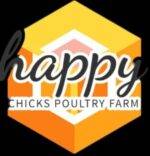A vital component of poultry farming, chicken nutrition has a direct impact on the health, output, and general well-being of your flock. Although conventional feeds like corn and soybean meal have long been mainstays in chicken diets, interest in alternative feeds that offer further advantages is developing. The fundamentals of chicken nutrition, the value of a well-balanced diet, and the benefits of feeding your hens alternate feeds will all be covered in this essay.
Comprehending the Nutrition of Chicken
A balanced diet consisting of proteins, carbohydrates, lipids, vitamins, and minerals is necessary for chickens. Each of these elements is essential to their development, ability to produce eggs, and general well-being.
Proteins: Made up of amino acids, proteins are necessary for development and the generation of eggs. To make sure they get all the amino acids they require, chickens require a range of protein sources.
Carbohydrates: These give you energy for everyday tasks and bodily functions. The main source of carbs in chicken feed is grains.
Fats: Fats aid in the absorption of fat-soluble vitamins and provide a concentrated energy source.
Minerals and vitamins: They are essential for a number of body processes, such as immune response, bone health, and reproductive health.
The Role of Alternative Feeds
Alternative feeds are becoming more and more popular among chicken farmers as the demand for economical and sustainable farming methods increases. These may consist of:
Insects: Mealworms, crickets, and the larvae of black soldier flies are high in protein and may be farmed on-site, which lowers feed expenses and waste.
Food Waste: Adding wholesome ingredients to conventional feeds can be achieved by using kitchen leftovers and agricultural byproducts. But it’s crucial to make sure these foods are healthy and devoid of dangerous ingredients.
Legumes: Peas, lentils, and other legumes are a sustainable choice because they are high in protein and can be cultivated in a variety of climates.
Seaweed: Packed in minerals and vitamins, seaweed can improve the nutritional profile of chicken feed and the quality of eggs.
Forages and Grasses: Giving chickens the opportunity to forage for grasses and other plants will help them get vital nutrients and enhance their general health.
Advantages of Different Feeds
Cost-Effectiveness: If an alternative feed can be generated locally, it may be less expensive than a typical feed source.
Sustainability: Reliance on traditional feed crops, which frequently demand substantial resources to produce, can be decreased by using alternative feeds.
Better Health: A varied diet helps boost immunity, enhance egg quality, and improve general health.
Environmental Impact: Reducing landfill trash and the carbon footprint of chicken production can be achieved by using food waste and by-products.
In conclusion
There are several advantages to feeding your hens different foods, ranging from financial savings to enhanced sustainability and health. It’s crucial to make sure your hens are fed a balanced diet that satisfies their nutritional requirements as you consider these possibilities. You may improve your flock’s health and help ensure that poultry farming has a more sustainable future by being receptive to new feeding techniques.
